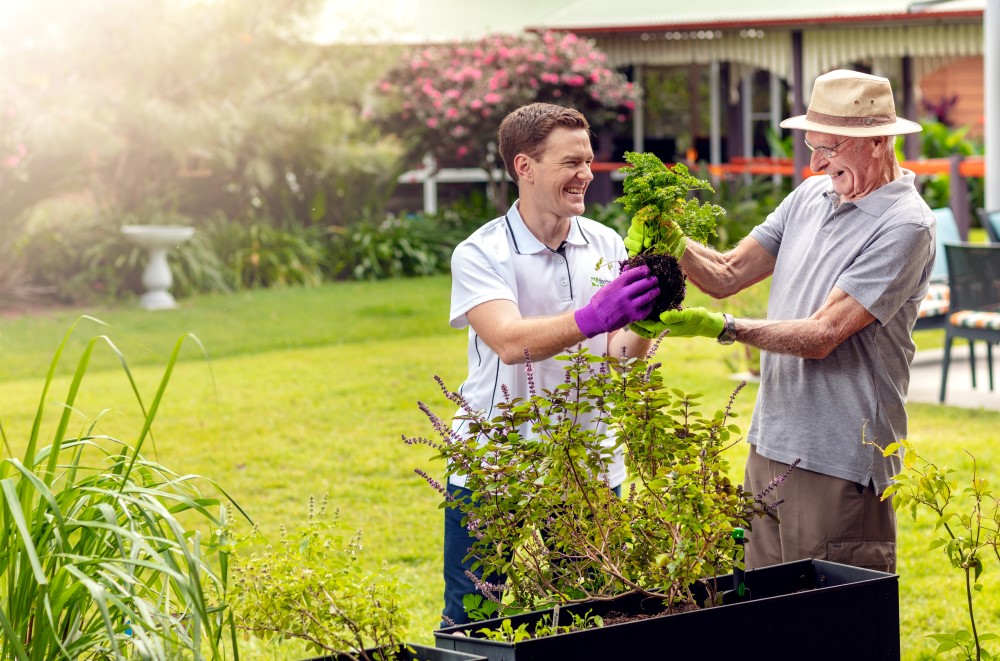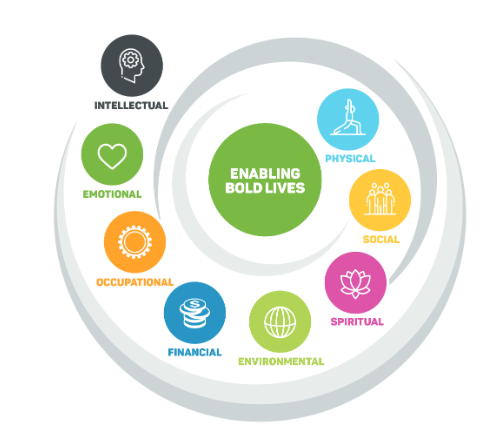Social prescribing
21 May 2021

The significance of fostering social connections as a way to boost our health and wellbeing is becoming increasingly recognised around the world, with some policy-makers including community connectedness in healthcare systems and forward thinking healthcare practitioners using this philosophy as they shift their focus from a person’s illness to wellness.
This concept is not new to Feros Care. We recognised the importance of the social determinants of health decades ago and, for the past thirty years, have consistently ensured that our clients receive a healthy dose of community and connection as part of their care.
This is one of the ways we deliver our mission of enabling bold lives. And that’s why our initiative Be Someone For Someone was established – to tackle loneliness and help people enjoy the social connections we know are so vital to their health.
While the notion of ‘social prescribing’ is relatively new in Australia, it’s now catching on across the world. There is even an annual international day to draw attention to it, which this year was on March 18.
SOCIAL PRESCRIBING … AN ELIXIR AND A MOTIVATOR
Fundamentally, social prescribing means that, where the root cause of a person’s health conditions may relate to their life’s circumstances, a healthcare professional recommends a wellbeing plan, supporting that person to understand and improve the things that matter to them, that are contributing to poor health.
Social prescribing addresses health risk factors such as loneliness and isolation, housing or finance, lack of intellectual or spiritual opportunities and sense of purpose through ‘community-based supports’. As such, a ‘social prescription’ could be any one of a range of social elixirs commonly prescribed include educational opportunities, arts and culture, group exercise activities, time spent outdoors in nature or community groups such as Men’s Shed.
To effectively deliver the benefits of social prescribing, a practitioner works with a person to understand their wellbeing from a holistic viewpoint. Rather than adopting a purely clinical perspective, the practitioner will take into account a person’s ability, hobbies or interests, and socioeconomic factors. They will then prescribe and actively link patients to an extensive and diverse range of social prescribing services and programs operating in the community.
HOW DOES IT DIFFER FROM TRADITIONAL TREATMENTS?
When opening at the Third Global Conference on Social Prescribing recently – which was attended by Head of Be Someone For Someone Jo Winwood – the Prince Of Wales said, “Community, collaboration and compassion in equal doses can support a person in ways that medicine on its own is unable to achieve.”
Traditionally, healthcare has been about treating symptoms and conditions, but social prescribing is about looking more closely at why certain symptoms exist and how a person’s physical and social environments can affect their overall health.
Ultimately, social prescribing is about addressing the root cause of poor health and recognising that it may not be a medical issue, but a social one.
A REMEDY THAT’S GOOD FOR EVERYONE
Everyone can benefit from more meaningful connections, but those who benefit the most from social prescribing and community-based supports are those people who are experiencing poor health outcomes which have their root causes in situations and circumstances that are detrimental to their health. In the UK, a reported 20% of people see a GP to talk about non-medical matters such as loneliness, grief, or financial matters.
BENEFITS, BONUSES AND BETTER OUTCOMES
For decades, Feros Care and Be Someone For Someone have witnessed the benefits of embracing a holistic approach through the work we’ve done with village residents and community clients. Now, the evidence for social prescribing is being recognised internationally and the health, economic, social and productivity gains to society are clear.
Social prescribing moves society away from a reliance on medication and enables people to become involved in their community as part of their wellbeing. Research shows its outcomes extend beyond a person’s health, benefitting the health economy with a proven reduction in the use of health services and freeing capacity. GPs report finding their work becomes more effective and satisfying and communities are stronger and more resilient as they work together to improve population health.
HOW FEROS CARE HAS BEEN IMPLEMENTING SOCIAL PRESCRIBING FOR DECADES
At Feros Care, we have been doing this for many years. On a national level, however, more work is needed and we are joining the calls for a systematic, nationally scaled but locally implemented approach to social prescribing.
Feros Care doesn't focus on ‘what’s the matter with me?’; Feros Care focuses on ‘what matters to me’. Within this framework, there are eight domains of wellbeing:
- Physical
- Social
- Spiritual
- Environmental
- Financial
- Occupational
- Emotional
- Intellectual
The success of social prescribing relies heavily on local knowledge. As one presenter at the 3rd Global Conference on Social Prescribing told the 1500-strong audience, “There is no point suggesting steak if there is no beef in the kitchen.”
At Feros Care, we have invested heavily in strong community connections across our footprint so that we know exactly what’s available in each area. This allows us to best support individual clients in ways that’s right for them. And where there are gaps, we seek innovative ways to bridge them. Take our Virtual Social Centre and Let’s Get Technical programs which are both designed specifically to help those who face obstacles in connecting with community activities and supports. Our volunteer visitor program, In Great Company, is another resource which can help with the collaboration of providers, services and people accessing what they need.
At Feros Care we have been passionate about the importance of social connections and a holistic approach to wellbeing, long before “social prescribing’ became a term or a thing. Speak with our team and they will ask you what the fuss is all about. It’s “the way we do things around here”. But we do need to advocate for a healthcare system that supports us to do that.
BRIGHTER FUTURES FOR FEROS CARE CLIENTS
Here are just two of many examples of how a social approach was used to improve the mental health of Feros Care clients.
87-year-old, Tweed Heads
At 87, one senior had become vision-impaired and, as a result of COVID, her usual social activities were cancelled and she became withdrawn. She found herself lacking in self-confidence and extremely anxious about leaving her house, even for a walk around the block. On two occasions, she attempted to end her life.
After appropriate clinical care, with the help of a Feros Care Wellbeing Manager, the woman acknowledged it was loneliness that had impacted her mental health and together, they discovered that her social anxiety was linked to the embarrassment of accidental spillages when drinking.
What did we “prescribe”? We found that her social anxiety was reduced when she was provided with an adaptive cup to help with spill-free drinking. We also connected her with a Vision Australia volunteer who was able to accompany her on any outings which helped her confidence return and enabled her to reconnect with her community.
The senior is now engaging in local social activities, enjoying friendships and is no longer withdrawn, anxious or experiencing suicidal ideations.
72-year-old, Ballina
A Feros Care Wellbeing Manager noticed this 72-year-old senior’s mood deteriorating, which indicated signs of depression. The senior had lost her confidence in activities such as cooking and driving which she previously enjoyed. Her anxiety levels began to rise and her sense of self-worth plummeted. She had also given up on her hobby of bowling, which was negatively impacting on her mental health and physical strength.
The social prescription for this woman was to get back to bowling so she could connect with her friends and regain her social confidence. This meant a plan to get stronger first, with progressive block and step walking to improve her physical strength to resume her social activities She now feels happy that her life has meaning again. As her strength has improved, she’s also able to walk without assistance, resulting in increased independence and confidence.
